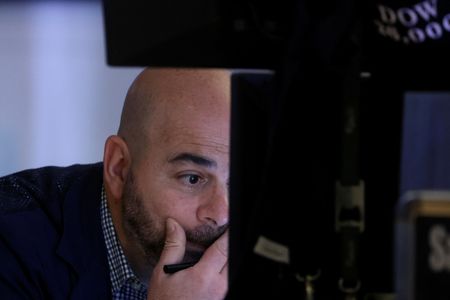
A look at the day ahead in markets from Julien Ponthus.
What a difference a week makes!
With the Dow Jones snapping out of its longest weekly losing streak in nearly a century and scoring its best week since 2020 last Friday, the narrative across stock markets has swiftly moved from meltdown fears to hopes of a rebound.
But there are contrasting expectations at play: some strategists believe the S&P 500’s 9% bounce back from its May 20 lows could in fact hide a bear rally, or in other words, a money trap before a deeper spiral lower.
Still, capital is making its way back to the stock market with $20 billion flowing to equity funds last week, the largest inflow in 10 weeks, according to BofA citing latest EPFR data.
Investors puzzled with the direction of travel for equities are equally flummoxed with the U.S. dollar index falling 3% from a two-decade high in mid-May.
Behind that whiff of optimism for stocks and the dollar’s rivals are signs that cooling U.S. inflation may prompt the Federal Reserve to slow down the pace of interest rate hikes after the summer.
Money markets have rushed to cut bets about the total interest rate hikes expected in the U.S. this year from over 190 basis points only recently to just over 180 basis points this morning.
In Britain too, despite expectations of 10% inflation, recession signals are forcing a shift, with 120 basis point of rate rises priced until June 2023 against 165 at the start of May.
Of course, big inflation drivers remain and the war in Ukraine could lift energy and grain prices even further as have COVID-19 outbreaks in China the potential to bring more disruption to global supply chains.
This morning’s data coming from Europe suggests we may not have passed peak inflation just yet: German import prices surged 31.7% in April, the strongest increase since September 1974.
https://fingfx.thomsonreuters.com/gfx/mkt/byprjdegdpe/Pasted%20image%201653662013504.png
Key developments that should provide more direction to markets on Monday:
– Swedish economy shrinks as pandemic and war pinch exports
– German April import prices surge 31.7%
– Euro zone business climate/sentiment/inflation expectations
– German prelim CPI/HICP
– Kenya’s central bank decision
–Pool: Japan Q2, full-year growth to be weaker than previously estimated
(Reporting by Julien Ponthus; Editing by Saikat Chatterjee)

